Joshua D. Angrist
Biographical
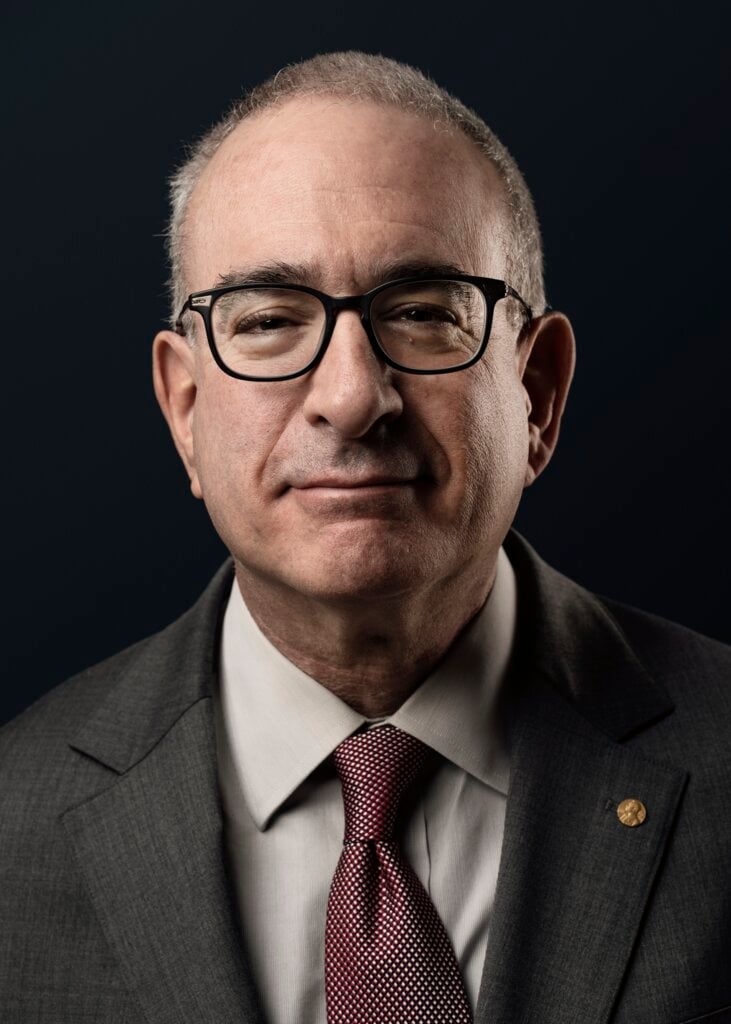
I’m fortunate to be the son and grandson of enterprising and resilient people who aspired to build strong families and meaningful lives even when uprooted. My academic success is a tribute to my parents’ and grandparents’ hard work and readiness to try new things, to the value they placed on learning, and to their desire to engage with and improve the world.
North America
My mother, Shirley Sarah Bloomstone Angrist, was born in 1933 and raised in a Yiddish-speaking household in Montreal. Her parents and their siblings had immigrated to Canada from small towns in Lithuania in the mid-1920s. My maternal grandfather Velvl (William) and grandmother Pessl (Pauline) Bloomstone settled on Montreal’s Saint Urbain Street, an incubator of working class Jewish culture immortalized in the novels of Mordecai Richler. Pessl’s parents and other family members who stayed in Lithuania were murdered by the Nazis in 1943.
In the 1930s, Velvl’s six siblings left Canada for Israel to join the Shomer Hatzair kibbutz movement, which sat on the far left side of intrinsically left-leaning kibbutz ideology. Velvl and Pessl were Communist Party sympathizers, members of the pro-Soviet United Jewish People’s Order. Hoping for a new and better world that never materialized, they elected to stay in Montreal to run a struggling grocery shop. Their daughter, Sarah, was a strong student who became “Shirley” when a grade-school teacher pushed a name change, implying that “Sarah” sounded too Jewish. My mother earned her BA and a master’s degree at McGill University. Her spare essays evoke her family’s pre-war journey to the new worlds of Canada and Israel, and the rising fear and desperation among those who didn’t escape the Holocaust.
My father, Stanley Angrist, also born in 1933, was raised in Dallas, Texas in a family that originated in Ukraine and Poland. My father’s mother was Freda Beck, known to our family as “Nana”. Fleeing pogroms in Odessa after 1905, Nana’s family landed in Galveston, Texas, aiming to reunite with family already settled in Dallas. Her husband, Isadore Angrist, suffered a fatal heart attack in 1953 when Stan was a college student. I never knew Isadore, but I met his father, William “Papa” Angrist, who had immigrated to New York from Poland in 1888.
Stan attended Texas A&M University, which was then a military school. He enlisted in the Reserve Officers’ Training Corps (ROTC) to become part of A&M’s Corps of Cadets. Service in the Corps was challenging, and Stan’s time there was more challenging than most. In addition to losing his father, my father suffered a bout of polio, missing the 1955 Salk vaccine by only a few years. As an experimental subject participating in the 2020 Phase 3 trial of Moderna’s mRNA-1273 vaccine, I thought often of my father’s youthful encounters with disease and loss.
My parents met as college students at a Hillel-run Jewish summer camp in the Catskills and married not long after. Although endogamous in a religious sense, their 1955 marriage was unusual for its time – their parents hoped and likely expected that they would marry and settle close to home. Instead, they moved to Ohio, 800 miles from Montreal and a thousand miles from Dallas. On family road trips north and south, I learned the measure of these distances, both physical and cultural.
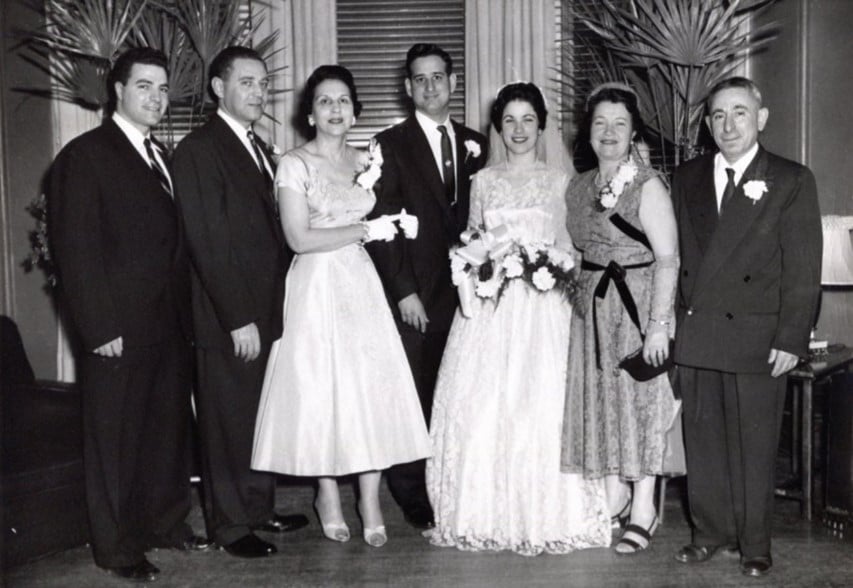
Figure 1. My parents’ wedding, Montreal, 1955 (Left to right: Frank Bloomstone [my mother’s brother], Jack Zlatis [an uncle], Nana [Stan’s mother], Stan, Shirley, Shirley’s parents).
After graduating from A&M in 1955, Stan was stationed at Wright Patterson Air Force Base near Dayton, Ohio. The newlyweds lived in base housing while my father worked at the Air Technical Intelligence Center (ATIC). A soldier in the Cold War, Stan deciphered technical documents and clandestine pictures of Soviet aircraft and pilots. The more-or-less-known dimensions of a pilot’s head, he explained to me once, could be used to gauge the size of other pieces of equipment. My father had studied Russian in graduate school to meet a language requirement. Not coincidentally, I studied Russian in high school. My father and I now agree that Russian is a terribly hard foreign language and that it’s a wonder anybody ever learns it.
I was born in 1960 in Columbus, Ohio, where my parents were enrolled as graduate students at Ohio State University after my father completed his service. Shirley did her Ph.D. in sociology; Stan studied mechanical engineering.
Pittsburgh, Pennsylvania
In 1962, Shirley began teaching at the University of Pittsburgh, later joining Stan at Carnegie-Mellon University. CMU was then the Carnegie Institute of Technology – Carnegie Tech – an engineering school something like MIT. In addition to their strong engineering bent, both schools sit atop an extensive warren of steam tunnels (the CMU tunnels get a cameo in the book A Beautiful Mind, which recounts the story of Nobel Laureate John Nash). My younger brothers, Misha and Ezra, were born in Pittsburgh in 1964 and 1970, respectively.
Restless academics, both of my parents left CMU to pursue second careers. Stan became a columnist for Forbes Magazine and then a reporter for the Wall Street Journal; Shirley worked in government affairs at PPG Industries. In the late 1970s and early 1980s, my father also owned and managed a bookstore and a jewelry store in downtown Pittsburgh. Misha and I sometimes worked at the bookstore, not always enthusiastically. Our mother was a trail blazer, first as one of CMU’s few female faculty, then at PPG, where she confronted sex discrimination in the business world.
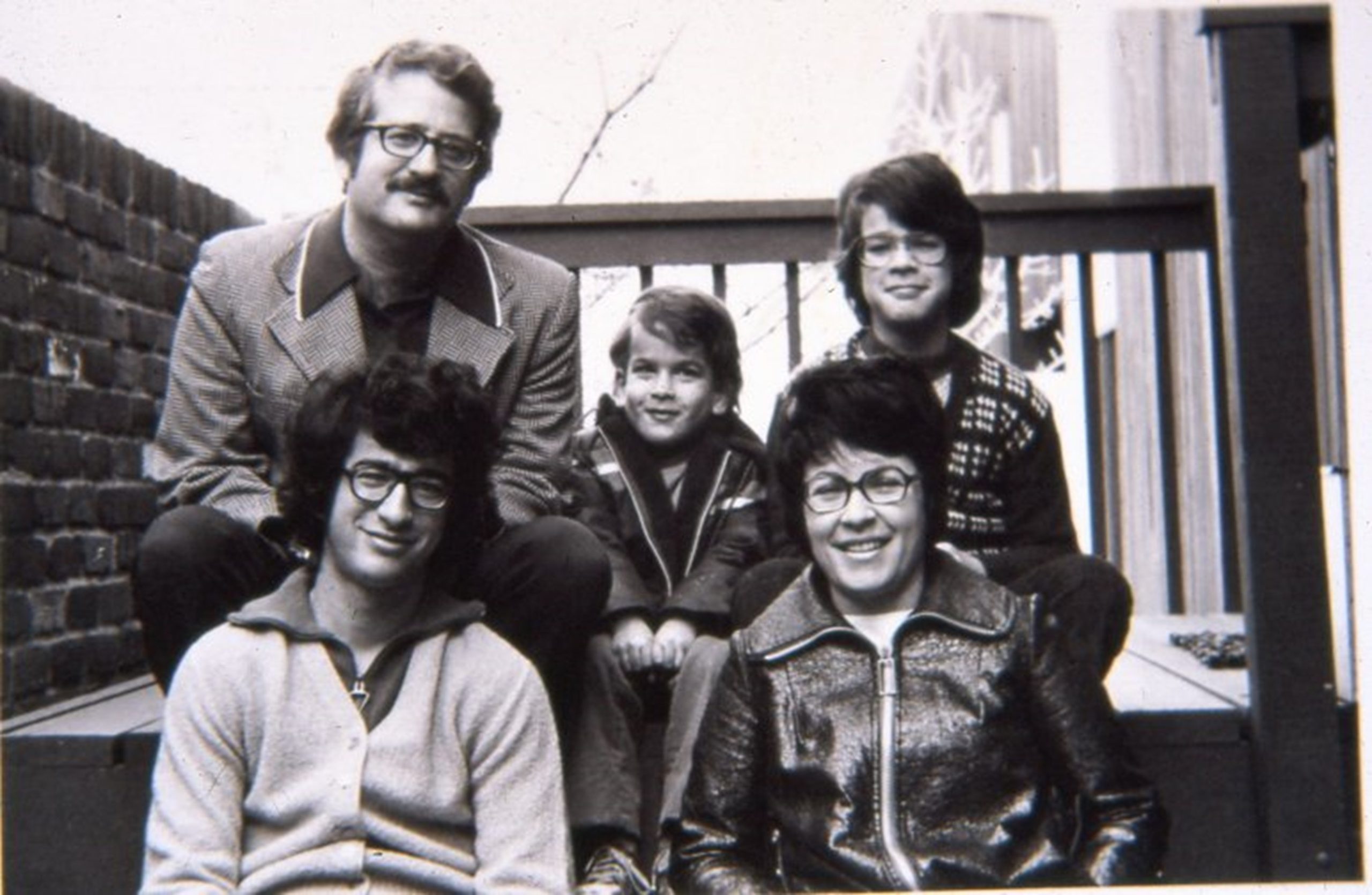
Figure 2. Maple Heights Road in Pittsburgh, c. 1975 (Ezra [b. 1970] and Misha [b. 1965] with dad in the top row).
My parents left CMU but they never left Pittsburgh, where they live happily today. Their love of the city was tested in October 2018, when a gunman killed 11 people at the Tree of Life synagogue complex, including a member of their congregation, Dor Hadash. The city and community’s generous and caring response to this tragedy reinforced my family’s appreciation of our adopted hometown.
I remember little of my early schooling beyond many hours of TV after school and occasional adventures in Frick and Schenley Park. The cloud factory described in Michael Chabon’s Mysteries of Pittsburgh is an image from the time. Most days, my friends and I retired to someone’s house to watch Kung Fu and the original Star Trek, screened back-to-back on weekday afternoons. Star Trek now seems cloying and preachy (a personal connection notwithstanding: my mother attended high school and college with William Shatner, another Montreal Jew). As readers of Mastering ‘Metrics (my econometrics text with Steve Pischke) will know, Kung Fu made a lasting impression. The Kung Fu Panda franchise is funnier than the original series – our avatars, Master Joshway and Master SteveFu, come from Panda. But the notion of paths taken and paths forsaken lives larger in the original 1972 series; that’s where the econometrics lies.
At Pittsburgh’s Taylor Allderdice High School in Squirrel Hill, I was an indifferent student. For one thing, it was a two-mile walk to school. Pittsburgh is hilly, the San Francisco of the Midwest, so it was uphill both ways. At school, I most enjoyed print shop, where I used the facilities to silkscreen record album covers onto t-shirts (the cover of Black Sabbath Volume 4 was the apogee of this work). In middle school in the 1970s, my brothers and I participated in Pittsburgh’s experiment with busing for racial balance – in 8th grade, I was bused one day a week from majority-white Allderdice to Arsenal middle school in the Lawrenceville section of the city. My brothers were bused daily to the fortress-like Reizenstein middle school in the mostly-Black East Liberty neighborhood. In contrast with my relaxed time at Arsenal (where I took another shop class), Reizenstein was a tough experience: Misha recalls frequent altercations between students and staff; Ezra was assaulted. As a young teen, I wouldn’t have guessed that I’d spend decades researching and writing about the schooling (and busing) experiences of children in the US and around the world.
My high school years were filled with non-school activities: acting in a theater group based at the Jewish Community Center, studying photography, and working in my own basement darkroom. Starting at age 13 and through college, I held part-time jobs so as to have money for darkroom supplies, upkeep and insurance on the high-maintenance cars I owned from age 16, cigarettes, and dope. My first job was at the Gaslight Club in Shadyside, where the young busboy crew worked for a dollar an hour plus a percentage of waiters’ tips. Since then, I’ve been curious about the world of work – it’s no surprise that I became a labor economist. Home from college one summer, I drove a jitney ferrying passengers into town from distant Greater Pittsburgh Airport. The money was good, but the activity illegal – it was sometimes necessary to outrun PA PUC officials to keep driving. I enjoyed a brief return to this sort of work as an Uber driver in the summer of 2016, doing field work for a study of the rideshare business.
Exploiting Pennsylvania’s then-modest graduation requirements, I left school at the end of 11th grade in 1977, my diploma earned by taking two each of the remaining required classes in health, gym, and English. Because I had enjoyed working at summer camps for the mentally handicapped, I took a series of disability-related full-time positions. The first was a brief stint in a group home for the mentally handicapped, followed by a longer spell in a private residential facility for severely disabled children, and, finally, work in a state psychiatric institution. I was fired from the first and last of these jobs, a maturing experience. Forty or so years on, our son Noam had similarly rocky teen employment experiences, from which he says he also benefitted.
Oberlin, Ohio
In the fall of 1978, following a year and some months of full-time work, I enrolled at Oberlin College, three hours west of Pittsburgh by car. With poor high school grades, I was lucky to be admitted from the waitlist on the basis of my SAT scores, a couple short stories I’d written, and a campus visit. My engagement with economics – to become a lifelong love affair – began in freshman year with Robert Piron’s Econ 101 class (where I first encountered cold-calling, then on the receiving end). I was not initially a standout performer and needed tutoring in math. Working my way up academically, I was eventually invited to write an economics honors thesis. As a thesis-writing senior, I benefited greatly from the advice and guidance of Oberlin faculty David Cleeton, Hirschel Kasper, and, especially, econometrician Luis Fernandez. With no advanced econometrics course at the College, Luis enrolled me in a class of one, meeting weekly in his office.
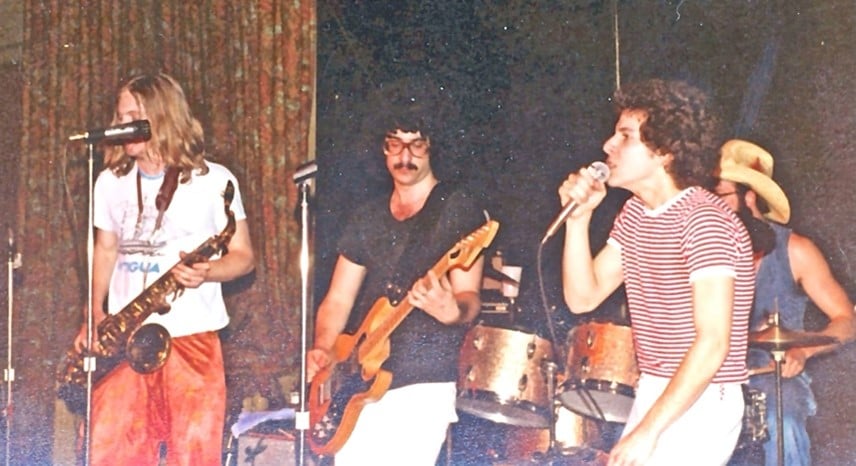
Figure 3. Oberlin College Wilder Hall, c. 1980 (Dave Sawyer on sax, Billy Segal vocals).
I spent my junior year as a General Course student at the London School of Economics (LSE), my first time overseas. LSE’s year-long courses were built around reading lists featuring journal articles, with no interim graded assessments given before the final. Accustomed as we were to textbooks and frequent low-stakes exams and problem sets, American LSE students had to grow up fast. My attentive and generous LSE tutor, the distinguished Sir Partha Dasgupta, helped me make this transition.
My college years set me on two paths, one intellectual and one personal. On the intellectual side, work on my honors thesis, titled “Sample Selection Bias and the Nature of Unemployment,” was a revelation: I loved doing applied econometrics. My undergraduate thesis didn’t solve the econometric problem I set out to tackle, which was how to estimate the effects of variables like schooling on offered wages when offered wages are unobserved for those who don’t work. I tried to apply the work of Nobel laureate James Heckman and my future thesis advisor, Orley Ashenfelter. Successful or not, I found the effort satisfying. Summer work as a research assistant for CMU economists Allan Meltzer and Scott Richard also engaged me. My RA experience at CMU is described in Mostly Harmless Econometrics, my first econometrics book with Steve Pischke. Although I was but a greenhorn RA, I sometimes argued with Allan and Scott about the substance of their work. They treated me like a colleague, reflecting the lack of hierarchy that I’ve come to see as characteristic of academic economics.
As a thesis-writing Oberlin senior, I was all-in. Lucky for me, Oberlin’s honors program features an outside examiner (a role I have since played). The honors class of 1982 was treated to a few days with legendary Princeton labor economist Orley Ashenfelter, who read our drafts and gave a graduate-style oral examination. Fatefully, Orley followed up with an invitation, offering me a school voucher good for one Princeton Ph.D.
From London to Jerusalem
My personal path forked in London, while visiting the LSE as a college junior. London in 1980-81 was boiling over. Punk rock was an energizing force: as at Oberlin, I played raucous guitar in a band. But the culture of anarchy in the UK was clearly not meant for the likes of me. Protests sparked by Thatcherite reforms and racial tension spilled over onto LSE’s urban campus. At the same time, antipathy to Israel among British students sparked my interest in Zionism. Presaging similar efforts today, the British National Union of Students had “no-platformed” pro-Israel speech. I spent my spring break from LSE vacationing in Israel, connecting with my maternal grandfather’s kibbutz siblings and their brood, as well as with a high school friend, Mike Drescher. Israel was energizing, but, unlike London, also welcoming. Although Israel too was rocked by ethnic and political strife in the early 80s, I glimpsed the chance to participate there in a nation-building adventure. Mike was similarly inspired, and so we both vowed to return soon.
After graduating from college in 1982, Mike and I made good on our plan. I enrolled at the Hebrew University of Jerusalem in a master’s program in economics, while Mike worked as counselor at the University’s School for Overseas Students. To my dismay, I struggled to keep up with Hebrew University’s tough curriculum, delivered in fast-paced Hebrew (an econometrics course taught by renowned Canadian-born economist Ariel Pakes was delivered in slow-paced Hebrew, but no less challenging for that). Still, my spirits remained high. In 1982, I met my future wife, Hebrew University student Miriam Poznanski, a native of Acco (Acre) in Northern Israel. Her parents, Holocaust survivors Esther and Yakov, had met in a displaced persons camp in Italy and immigrated to Israel in 1948, where they raised Mira and her two older sisters in a tiny apartment.
Entranced by my new girlfriend and thrilled as ever to be in Jerusalem, I left Hebrew University but doubled down on Israel, becoming a citizen in March 1983. Eschewing the possibility of military deferment, Mike and I were drafted in the summer of 1983 for a two-year tour of duty in the Israel Defense Forces (IDF). While I was on active duty, Mira and I lived together in her small dorm room, an arrangement facilitated by my extended soldierly absences. As an added bonus, my brother Misha spent his junior year of college at Hebrew University in 1983–84. Misha and his friends offered me a second home-away-from home on brief weekend leaves.
Following a path then typical for Israeli immigrant soldiers, Mike and I enlisted in the IDF’s Nahal Brigade, an infantry unit. We aimed to serve in the Nahal’s 50th battalion, a well-known elite airborne (paratrooper) unit. For me, this required an initial foray into battle with army bureaucracy: I had been deemed unqualified for elite combat service by virtue of excessive myopia. This problem I fixed by convincing the Argentinian-born Army medic who’d been tasked with re-evaluating my fitness to look the other way while I studied his eye chart.
Paperwork sorted, I served more or less as planned: basic training, further training in field communications, armored personnel carrier driver’s ed, jump school. Training was followed by active duty deployments in Lebanon, where I served mostly in the Bekaa Valley and spent a winter on scenic, frozen Jabal el Barouk. Lucky for me, by the time of my deployment, Israel’s ill-considered Lebanon War was winding down (a few friends were not so lucky). My battalion was one of the last to withdraw behind a new southern security line in the winter of 1985. The Lebanon War and its attendant catastrophes fractured Israeli society like nothing before or since. Although Mira and I participated in the occasional antiwar protest, I was – ironically, though not, I think, exceptionally – isolated from civil strife by virtue of my service.
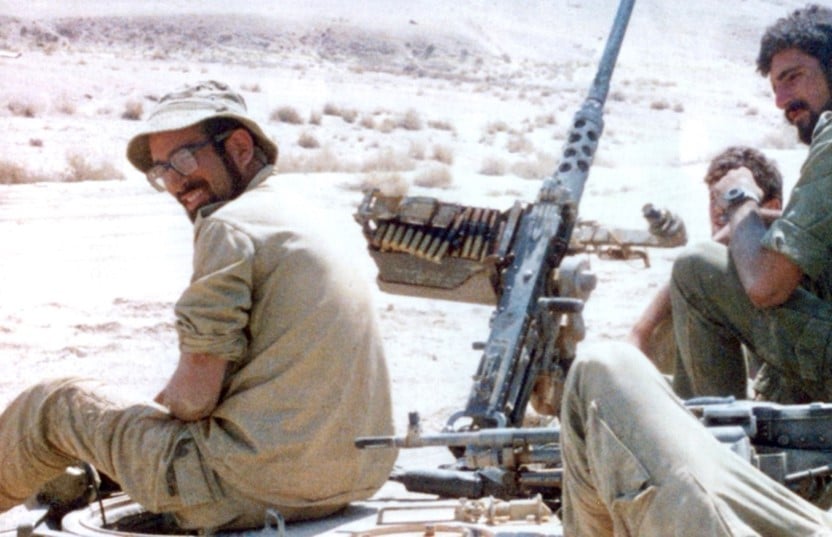
Figure 4. On maneuvers in 1984, near Nabi Musa in the Judean desert.
My army service concluded with six months of farmwork on a kibbutz, an essential part of the Nahal experience. On Kibbutz Netiv HaLamed Heh near Jerusalem, I was welcomed by my Aunt Pessi Bloomstone’s daughter, Netta and her husband, Holocaust survivor Nachum Bogner. Kibbutz life was idyllic. But I found farmwork exhausting and relentless, farm animals smelly and unforgiving, and farm machinery troublesome and dangerous. I looked forward to time with Mira in Jerusalem.
In the Spring of 1985, Mira and I were at a crossroads. She had finished her B.A. in social work; I was ready to return to Hebrew University. Visiting my folks for Passover, my father suggested I check back with Orley Ashenfelter to see if his offer of a Princeton Ph.D. was still good. On a quick visit to Princeton, he invited me to enroll that fall. Mira and I married in August 1985 on Kibbutz Ein HaShofet (home to Pessi Bloomstone and other Bloomstone offshoots) and headed to Princeton shortly thereafter.
Princeton, NJ
Princeton was paradise. A couple of mystifying macroeconomics classes notwithstanding, I felt I was where I was meant to be. I was particularly energized by the camaraderie and intellectual ferment of the Princeton Industrial Relations Section, where I found my second thesis advisor, future co-laureate David Card (also an Ashenfelter student). The Section at that time was a cramped warren of offices in the basement of Princeton’s Firestone Library, a spaced shared by faculty and graduate students. I shared an office with Brian McCall, and overlapped with Dwayne Benjamin, Janet Currie, John DiNardo, Tom Lemieux, and Steve Pischke. I soon met an additional Ph.D. advisor in the classroom, assistant professor Whitney Newey, later to become a colleague and friend at MIT.
At Princeton, my debt to Orley quickly accumulated: not only had he given me a golden ticket to a Princeton Ph.D., it was Orley’s idea to use the draft lottery to gauge the long-run consequences of Vietnam-era military service. The draft lottery project became my Ph.D. thesis. Other aspects of my work at Princeton are detailed in my Nobel Lecture, while Card’s Lecture paints a picture of the Section from his slightly older vantage point.
Mira and I left Princeton with a precious gift: our infant daughter, Adie, born in March 1989 as I was giving an academic job talk. Adie was born at St. Francis Medical Center in Trenton, NJ, where Mira had been working as a psychiatric social worker. Only 25 minutes by car, gritty Trenton was a world away from leafy Princeton. The St. Francis team gave Mira and newborn Adie the royal treatment.
Alan Krueger came to the Industrial Relations Section as an assistant professor in my third year of graduate school (again thanks to Ashenfelter, who recruited him). In 1988, Alan and I embarked on the project that led to our 1991 compulsory schooling paper. “AK91” (Angrist and Krueger 1991) uses quarter of birth (QOB) to construct instrumental variables (IVs) for schooling in a wage equation. This project began as a discussion of empirical strategies that might reveal the causal effects of World War II military service on veterans’ earnings. The WWII study was my first working paper with Alan, released in 1989, though published only in 1994. Alan and I had discovered that WWII veterans were drafted in birthday order, and so an IV identification strategy was born. But it remained to discover exactly which endogenous variable this newborn birthday instrument was to be an instrument for.
The QOB project led to the terrifying weak instruments problem, first demonstrated for the AK91 research design in a 1995 paper by Alan’s Harvard classmate John Bound and Bound’s students David Jaeger and Regina Baker. It had long been known that two-stage least squares (2SLS) estimators (used to combine many instrumental variables) are biased. So what? The BJB paper shows that some of the 2SLS estimators in AK91 are biased towards the corresponding ordinary least squares (OLS) estimates. Our findings, which indeed showed OLS and 2SLS estimates to be close, might therefore be seen as spurious.
The many-weak IV story broke in 1993 when I was back in Israel, doing a stint of military reserve duty in the Judean desert. Tired and anxious in an isolated military outpost, I couldn’t have been more miserable. In June 1993, Alan and I withdrew an accepted paper that used draft lottery dummies to instrument schooling because, in light of BJB, we understood that the 2SLS estimates in this paper were badly biased. But BJB soon became an inspiration for creative solutions to weak-IV problems. Some of my work on this topic was done with my co-laureate Guido Imbens, as well as with Alan. Happily, when these new solutions were tried, the AK91 findings held up.
That period of trepidation, excitement, and understanding was a high point in my life and, I believe, in Alan’s life as well. I remember the joy in our work, the exhilarating sense that we were on to econometric applications that were novel, interesting, and useful. Had he lived, Alan (who collaborated extensively with our co-laureate David Card) would surely have won a Nobel too.
Cambridge, MA
Before returning to Israel in the summer of 1991, I had taken my first academic job in the Harvard Economics Department in the fall of 1989. I apprenticed there to the masterful econometrician and teacher, Gary Chamberlain. Gary was a towering figure in our field and a patient and thoughtful sounding board for me. He schooled me in the art of econometric instruction when we taught Harvard’s Applied Econometrics course together.
At Harvard, I intercepted my co-laureate, friend, and collaborator Guido Imbens upon his arrival in 1990. Guido and I overlapped at Harvard for just one year, but we have been together one way or another ever since. The Angrist family lived in Harvard’s Botanic Gardens housing complex, about a mile up Garden Street west of campus, while Guido and his first wife, Alison, lived down the street. My Nobel Lecture details my partnership with Guido, the gestation of the LATE Theorem, and how we came to team up with eminent statistician Don Rubin. In 2002, I was thrilled to serve as best man when Guido married Susan Athey.
Jerusalem, Brookline; Jerusalem, Brookline
Two years into my Harvard appointment, Mira and I made good on our commitment to return to Israel. But not before our son Noam was born in Boston in July 1991. With 6-week-old Noam and toddler Adie in tow, we took up residence in Hebrew University’s French Hill faculty apartment building, walking distance from the East Jerusalem Mount Scopus campus. We enjoyed life in Israel, connecting with friends and family. In 1993, we bought a lovely apartment in the Jerusalem suburb of Mevaseret Zion, with a spectacular view of the city.
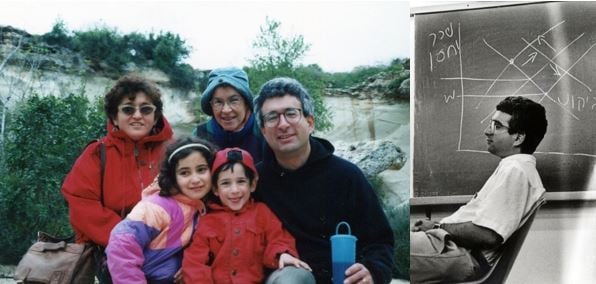
Figure 5. (L) Mira, Adie, and Noam with my mother and me near Jerusalem, Feb. 1996; (R) Hebrew University, c. 1993.
My time in the Hebrew University Economics Department was exciting and productive, due in large part to a wonderfully fruitful collaboration with my Hebrew University colleague Victor Lavy. Among other rewarding endeavors, Victor and I discovered and deployed the Maimonides Rule research design, exploiting the fact that Israel caps elementary school class size at 40 to estimate the causal effects of class size reductions on student achievement. Our Maimonides paper was one of the first in economics to use a regression discontinuity research design.
In addition to Maimonides’ Rule, I’m especially proud of two studies of the Palestinian labor market. After long negotiation, and in the wake of the 1993 Oslo Accords between Israel and the Palestine Liberation Organization, Israel’s Central Bureau of Statistics allowed me to be the first scholar to work with micro data from the Territories Labor Force Survey (TLFS). The TLFS was a large household survey, something like the Israeli Labor Force Survey, carried out by local enumerators in the occupied West Bank and Gaza Strip. My first TLFS study examined the impact of an influx of Palestinian college graduates on the economic returns to schooling in the Territories. The second used the Palestinian Intifada as a natural experiment that shifted the supply of Palestinian migrant labor, thereby identifying Israeli employers’ elasticity of demand for their Palestinian workers.
My time at Hebrew University was fruitful and fun, but the pay was low and the cost of living high. I also came to resent IDF reserve duty, which pulled me away from research and my young family. My Israeli friends suggested I should have thought of that when I finagled my way into a combat unit a decade earlier.
In 1994, I was invited by then-department-chair (and future governor of the Bank of Israel) Stanley Fischer to visit MIT’s storied Economics Department. Mira, the kids, and I decamped from Jerusalem to Brookline, Mass. On that visit, I entertained a stream of senior faculty asking probing questions. This felt to me like something between a job interview and psychological screening. I recall the late Rudi Dornbusch stopping by to observe that I seemed “reasonable enough.” Not long after, newly-installed chair Paul Joskow offered me a tenured appointment, which I was thrilled to accept in 1996, one year after we had returned to Jerusalem. MIT and Brookline have been our academic and family homes ever since.
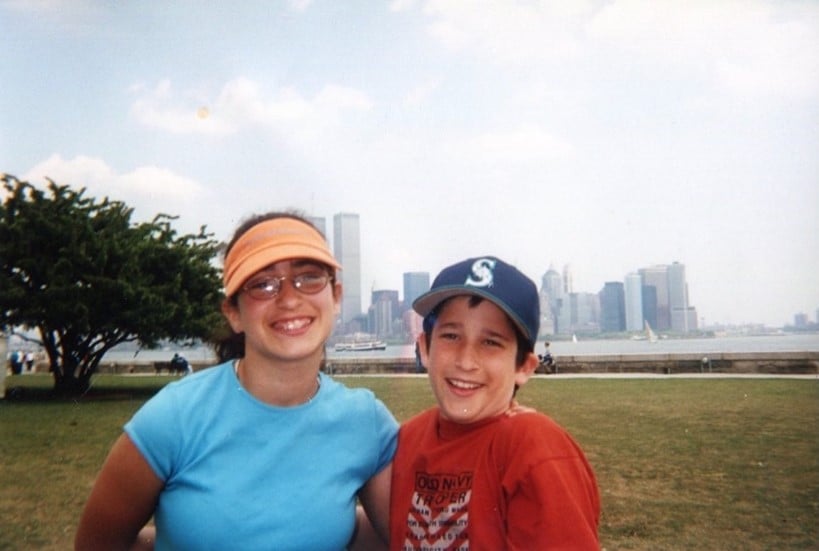
Figure 6. Adie and Noam visiting Ellis Island, May 2001.
I quickly came to appreciate the broken concrete of MIT’s east bloc campus (since spruced up), which proved fertile ground for my kind of applied econometrics. The turn of the century found me collaborating with MIT colleagues David Autor and Daron Acemoglu, steering the world’s top graduate program in labor economics.
A little over a decade after I joined the department, MIT got even better. In 2008, Parag Pathak arrived, and an enduring friendship and partnership was born with our first paper in 2009 (published in 2011). This work was the fruit of a delicate negotiation between Parag, Atila Abdulkadiroglu, and me on one side, and Tom Kane and Sue Dynarski on the other. Sue, my former Ph.D. student, closed the deal, bringing our competing teams together to share data agreements and empirical strategies. This collaboration led to the first study to exploit centralized school assignment algorithms for the identification of causal effects. The paper is also of major substantive interest, the first to document the remarkable success of Boston’s charter schools.
In 2011, Parag and I founded the School Effectiveness and Inequality Initiative (SEII), with the help of then-department-chair Ricardo Caballero. SEII has since evolved to be Blueprint Labs, with ever-widening horizons. This expansion includes a new healthcare initiative led by Nikhil Agarwal. I’m also proud to work with co-lab-director David Autor and our former student Mandy Pallais on a standard-setting randomized trial examining the effects of financial aid.
Our lab’s work has produced not only scholarship and policy impact, but also intellectual property for which there is a real market. The COVID pandemic notwithstanding, in 2020, Parag and I launched a startup that aims to help school districts and other organizations solve high-stakes matching problems and make the most of the resulting data. Avela Education is led by our gifted CEO, Greg Bybee. I’m gratified beyond description to see our academic research deployed to improve education and training in the real world.
As well as having been blessed with a remarkable family, I’m fortunate to have found so many talented and generous advisors, friends, and colleagues. At every juncture, I’ve benefited from more than my fair share of wise guidance, warm companionship, and selfless collaboration. I try to remember to count my blessings, but there are, happily, too many to count.
Copyright © The Nobel Foundation 2022
Nobel Prizes and laureates
Six prizes were awarded for achievements that have conferred the greatest benefit to humankind. The 12 laureates' work and discoveries range from proteins' structures and machine learning to fighting for a world free of nuclear weapons.
See them all presented here.
